Port Sandwich, Malakula

Lochmarin
Sat 3 Oct 2015 00:51
16:26.374S 167:47.036E Port Sandwich It was a quiet, uneventful night passage from Epi to Malakula. It did feel quite special though; every once in a while, doing what we’re doing, one has to pinch oneself and think “Is this really happening?”. Sailing to Malakula, it sounds so exotic! All went well until we were about to enter the anchorage at day break and we went to furl the jib. Remember what happened when we tried to leave New Zealand? Instead of furling the foil unwound itself from the furler. The same thing happened again. Ball bearings all over the deck and the sail still up. We hauled down the jib by hand and collected as many ball bearings as we could find. "Oh shit” we both thought. What if we can’t fix it? It took the rigger all day last time it happened. Will we have to sail back to Port Vila to get a part sent in? If so, if it’s light winds we could use the code zero jib, if it’s strong, just the staysail… All these thoughts going through both of our heads, but without a word exchanged. No point worrying until we’ve had a chance to look at it and see what we can do. Meanwhile we needed to anchor.  Barmandrin Village Port Sandwich is a lovely, well sheltered river anchorage. We passed the village of Lamap as we came around the head, seeing local folk walking out on the reef to collect sea food, then came down past Barmandrin before tucking in around the point at Planter’s. On the way we passed the usual outrigger canoes but there was a difference: all the people paddling them were women, either in pairs or on their own. Up until now we’d only seen men in the canoes. Also, there was a distinct lack of Mother Hubbard dresses, knee length, or longer, skirts and tops were the order of the day. 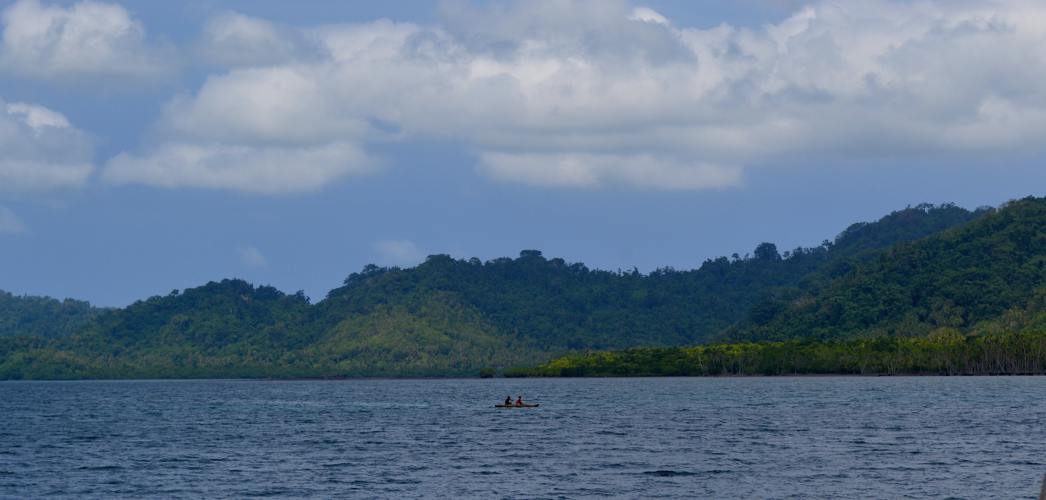 Two women paddling across the river. Our priority, of course, was the furler, but it wasn’t going to get any worse right now so we paused for coffee and to take in our surroundings. A small herd of cows ambled down to the beach and hung out a while, the smaller ones paddled, the mums sat in the shade, just as a group of humans would. It must be good being a cow on Malakula, as long as the rains come to keep the grass growing. 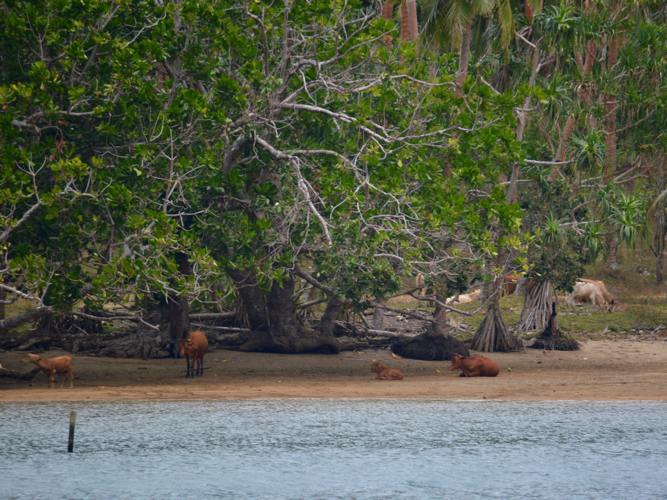 Coffee finished we cleared the decks and Phil jammed himself into the pulpit to assess the situation, with me as his go-for running back and forth to the tool box. It wasn’t as bad as we’d feared, Phil put what ball bearings we’d managed to rescue back in and was able to screw the foil back onto the furler. There were two pins sticking a half centimetre out either side of the furler, we figured they were supposed be lock pins but was it one pin that had sheared off, or two half pins? We needed to know and realised we’d given the manual to the rigger in New Zealand and he’d not returned it. We made a Satellite phone call to Mat, who had left the retaining pin(s?) out originally then had to come and spent a day fixing it when we’d returned to New Zealand. It was two half pins, he said, he’d loctited them in but they’d clearly worked loose. Phil managed to get one out, so we could line them up with the holes, then hammered them in and fixed a hose clamp around them to try to avoid a repeat. Now, that couldn’t have been how the furler was designed because it couldn’t be taken apart to be serviced, you can’t hammer out the half pins. I think Mat must have lost the original fixings, that he forgot to put back, and substituted these half pins, with a squidge of loctite for good luck. Annoying. However, Phil had managed to fix it, what a relief! We have other foresails but you can’t half furl them and still sail, like you can with this one. The others are either up or down, and it’s quite an operation to get them up or down, so quickly reducing sail for a squall to blow over, then increasing sail again when it’s past would be a lot of work for a short handed crew. Using the furler one person can often manage it without having to leave the cockpit, so the off watch partner can still get some rest at night. 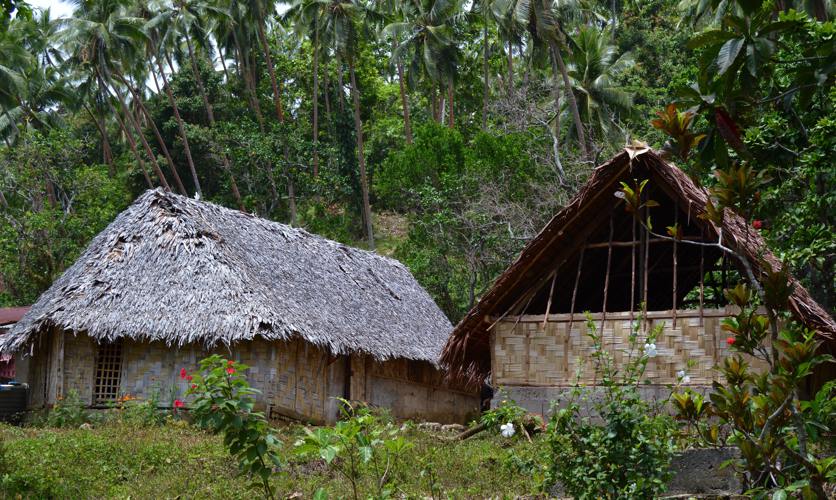 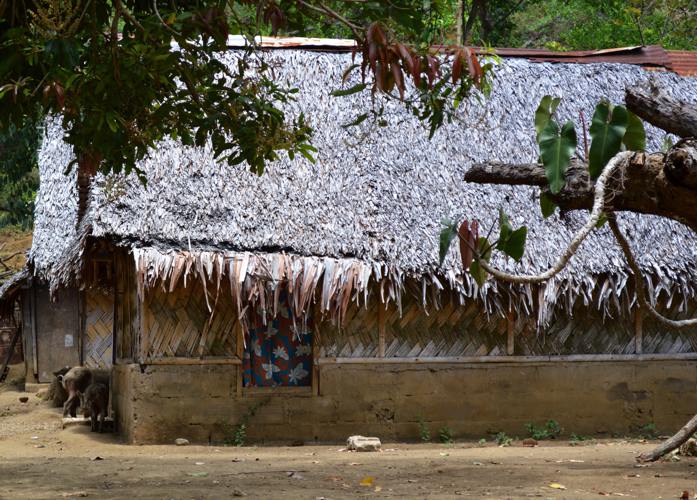 All fixed again we felt able to go ashore to explore, walking along the road back towards the Lamap Village. There’s a surprising number of houses along the riverside, from the water you can only see a couple, but all along the road are pretty traditional buildings. The cows weren’t the only animals to be hanging around, pigs and chickens were everywhere and the houses had fences around their gardens. Ah, we thought, it’s like in Tonga, the animals are free range and the gardens are fenced in, except we saw pigs and cows and chickens inside the gardens too. There was a great deal of bird life, we heard chatter all around us in the trees but it was really hard to spot any birds, apart from some lorikeets squawking as they flew from palm tree to tree. Finally I managed to spot a tiny bird that had been making a huge racket. I was told they were called Ten Tongues after the wide variety of calls they make. Perhaps it was just one kind of bird out there after all, making lots of different songs. 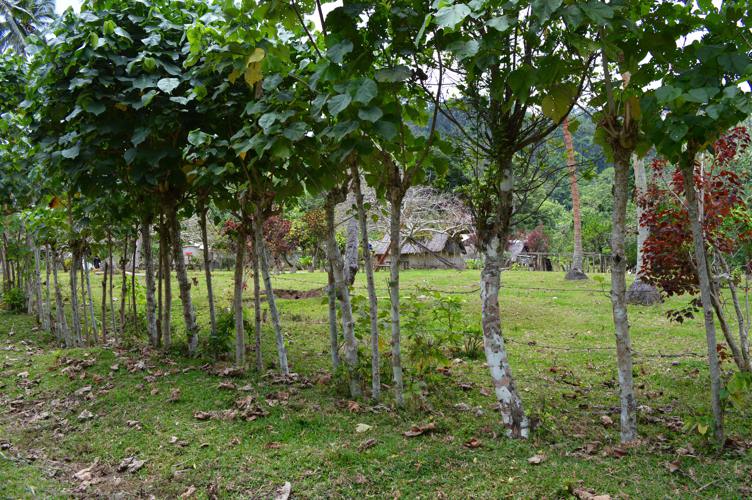 A growing fence around one of the gardens, perhaps to keep out the animals 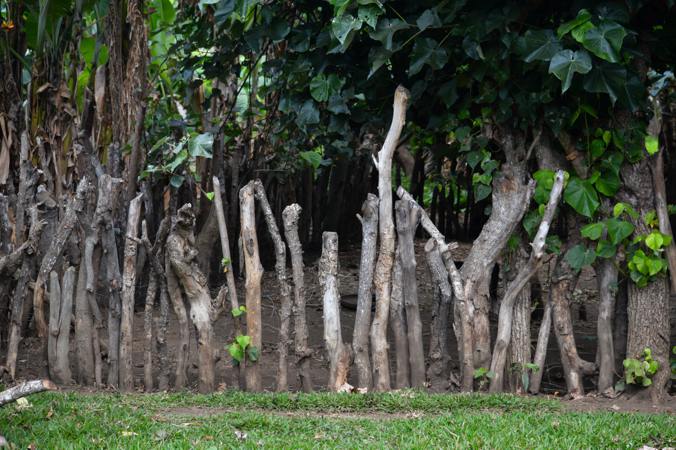 compared with a shady pig pen in Port Resolution, Tanna. 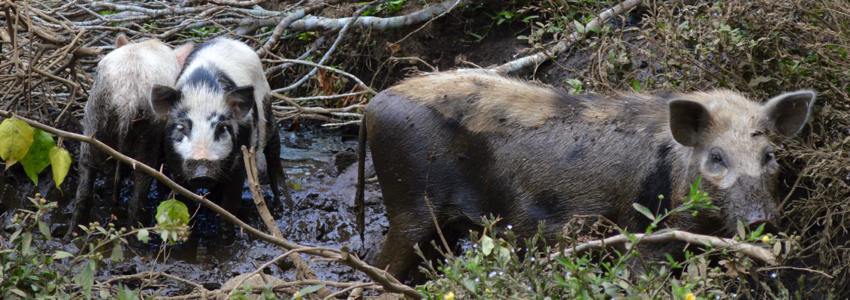 Malakula pigs living the life... As we walked we met women returning from the gardens and pairs of boys, armed with catapults and bush knives, trying to hit the flying foxes that were flapping overhead. The boys were remarkably accurate with the catapults but didn’t seem to have much luck. It must be cool being a boy in a country where you are positively encouraged to go and hunt animals for the pot. Everyone greeted us and made us feel welcome. In Bislama they don’t usually greet each other with ‘Hello’ or by passing the time of day, they greet each other by name so it’s not surprising everyone asks yours and offers theirs, but it does feel very friendly. We waved to people going about their work. One Mother was washing a squalling toddler on her veranda, we smiled and waved a greeting. A few minutes later a 5 year old boy came running after us with a gift of two drinking coconuts - very welcome in the hot sun, but we weren’t carrying a bush knife (ridiculous as that may seem!) so had to wait until we passed a lady who happily used hers to open them for us. 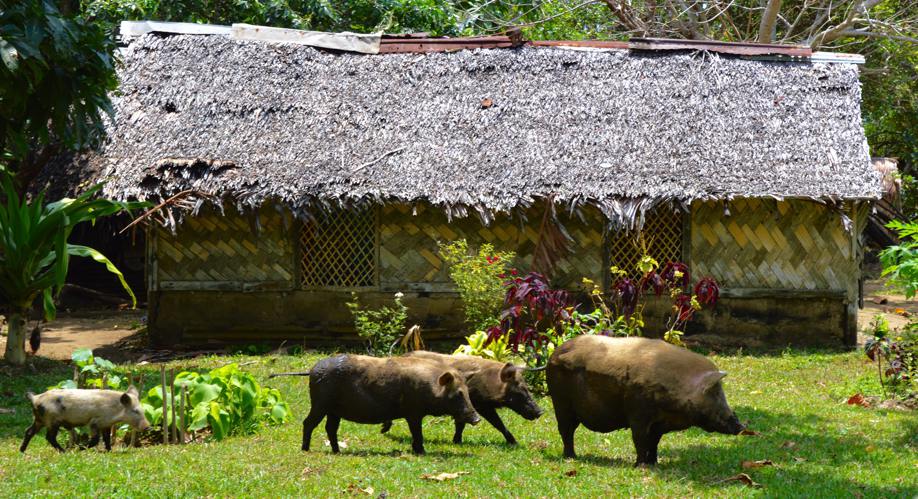 One family were particularly keen to make toktok. The father was a minister and they were in the process of building a church. They offered to trade for vegetables so we arranged to come back the next day with clothes and tinned beef. They had a young girl, about 11 or 12 years old who I noticed wasn’t in school. They explained that they had moved there from an English speaking village and that this one was French speaking. She had attended Kindergarten in English and they hadn’t wanted to put her in the French school when they’d moved. She’d had no schooling since Kindergarten and they wanted to help her, both parents could read and write. They were in luck. Back in Whangarei, Carolyn, whose house we’d rented, was a teacher and she’d sorted out boxes of books the school no longer needed for us to take up to the Islands. These included a set of handwriting, reading and spelling work books, probably given to the school as samples, along with a variety of reading and some simple mathematics books. I was able to pass these on to the family, along with some suggestions for how to make best use of them. With these resources this young girl was going to be able to learn to read and write, opening so many more doors for her as she moved into adulthood.  So pleased! |